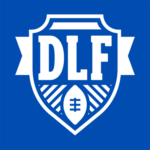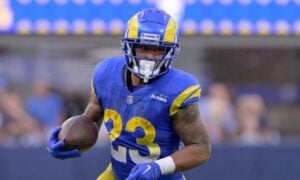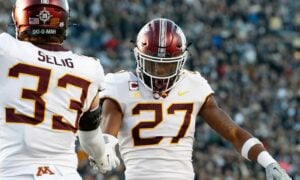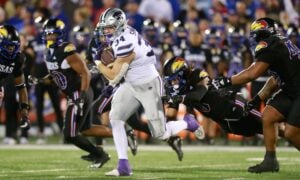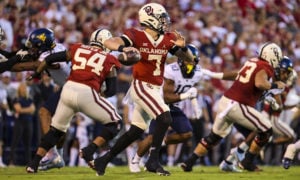Dynasty Spotlight: Geno Smith
Editor’s note: This article is one in a series of articles geared towards the Dynasty Football World Championship contest sponsored by our friends at FFtoolbox.com. This is the world’s first dynasty fantasy football contest designed to reward the long term, successful dynasty coach, and crown a Dynasty King! Find out more about the Dynasty World Championship at DynastyKing.com, and be sure to check FFtoolbox.com’s articles, tools and rankings for sports beyond fantasy football, including Baseball, NASCAR, Golf and more!
If you’re new to the world of dynasty football, let me welcome you to the ultimate fantasy football experience! Be warned it is an entirely new journey and one that requires year round commitment to do well. In essence, it is the difference between buying a car and renting one for the weekend. Anyone can rent a red Ferrari, but it takes a special individual to be able to own one and take care of it. The same is true when you compare redraft fantasy leagues to dynasty leagues. Anyone can get lucky over a brief period of time and win in a redraft league, but it takes someone special to put together and maintain a roster that can win year after year.
Since you keep the same roster each year in a dynasty league, there is a special focus on young players and rookies who are coming into the league. Unfortunately, many owners who are new to dynasty leagues tend to make two fatal errors in reasoning:
1) They tend to overvalue rookies and their potential when compared to more established players. It is very easy to get swept up by “rookie fever” when the media focus of the majority of the off-season is on the NFL combine, college pro days and the NFL Draft. It is also easy to remember the rookies who made major impacts in past years like Andrew Luck and Doug Martin. The important item that seasoned dynasty owners know and that new ones need to learn is that most rookies do NOT become fantasy relevant. In fact, many of them don’t even become NFL relevant. Putting too much weight on unproven players can destroy a roster.
2) They fail to realize that not all rookie classes are created equally. The 2012 rookie class was exceptional in a number of ways giving us the extraordinary talents of not just Luck and Martin but also Robert Griffin III, Russell Wilson, Trent Richardson, Justin Blackmon and others. The 2011 rookie class gave us AJ Green and Julio Jones, both of whom exploded as rookies. This is simply not normal. In fact, it is extremely rare that you get multiple top ten talents in a draft. This year’s group, while it has some nice players, doesn’t have any who are at the same level as those players listed above. It lacks that special player, or in the case of the past few years, those special players, plural. Simply put, not all groups of rookies are the same.
With that in mind, I’m going to share some thoughts on a few of the biggest rookies at the skill positions this year. My goal is to help you figure out how they compare to past rookie classes so you value them properly when drafting your first dynasty team.
Previously I took a look at the top running back on most draft boards, Eddie Lacy. Let’s take a few moments to check out the top quarterback on most boards, Geno Smith.
Smith has led West Virginia as their starting quarterback ever since his true Sophomore season. During his time there, the 6’2”, 218 pound signal caller managed to put together some rather impressive numbers as he led the spread attack for the Mountaineers. Not only were his numbers impressive, but he improved a little bit each and every year, which is exactly what teams like to see.
He is billed as an accurate, athletic quarterback who makes good decisions and can lead a team. Some look at his size and physical abilities and try to lump him into the same category as RGIII – that isn’t Smith’s kind of game though. While he has the ability to run (evident by his sub 4.6 second time in the 40 yard dash), he is much more of a pocket passer. Even Smith has said in various interviews that he is not a running quarterback and doesn’t really want to be one either.
His main strengths are his accuracy and quick, quality decision making. Over his career he had a 97:20 touchdown-to-interception ratio. He also managed a 67.5% career completion percentage as a starter at West Virginia. His Senior year was even better than his career numbers with an impressive 42:6 touchdown to interception ratio and a 71.2% completion rate. His arm strength and quick release are other key strengths that will definitely help him to progress as both are definitely at the level needed to be a quality starter at the next level.
Like most skill position players in this year’s draft, there are some concerns about Smith and his transition to the next level. First and foremost on that list is that he played almost exclusively from the spread and took almost every single one of his snaps during his senior year from the shotgun formation. That raises some major question marks about the quality of his footwork as well as his ability to pick up blitzers and pressure when taking snaps under center. He struggled when faced with pressure even when taking snaps in the shotgun. When he was forced to scramble, his passes were either inaccurate, lacked power, or both. At the next level, passes like that often lead to turnovers.
Another concern I personally have in regards to Smith stems from the fact his top two targets in the passing game will very likely be drafted in the first or second round of the NFL draft. While most top college quarterbacks have at least one receiver with NFL-caliber talent catch passes for them, sometimes top level receivers can make a quarterback appear a little bit better than they really are. With Tavon Austin (likely to be drafted in the top half of the first round) and Stedman Bailey (a likely second or third round pick), that is quite the talent pool catching passes from Smith. At times, their ability to haul in slightly off target throws, ability to create space and most importantly their talent to make yards after the catch might have inflated Smith’s statistics a little bit.
To sum up the strengths and weaknesses of Smith, we have an extremely accurate quarterback with a strong arm, quick delivery and very good decision making ability. Unfortunately, almost all his experience is in a spread offense out of the shotgun. Smith also struggles with his footwork and doesn’t always feel the pressure coming after him. When he is forced to throw on the run, his passes often lack accuracy or float in the air. He has the ability to run with the ball when required, but he doesn’t like to and simply prefers to stay in the pocket.
While most believe he is the top prospect in this year’s draft at the quarterback position, he isn’t anywhere near the special talent level of Andrew Luck or RGIII. If I had to compare him to someone in last year’s draft class in terms of talent level (though not necessarily style of play) it would have to be Ryan Tannehill. When it comes to production over the early part of his career, I’m guessing it will more closely mirror Tannehill’s season than either of the other first round quarterbacks.
If we are talking more of a Tannehill level of talent, the question is where he should be going in terms of startup drafts? Unlike last year, where Luck and RGIII were going in the first five or six rounds of most startup drafts as low end QB1s, Smith can be taken much later than that. According to the dynasty startup Average Draft Position (ADP) that is available at dlfstg02.dynastyleaguefootball.com or by clicking here, you can see Smith is currently going in the middle of the thirteenth round in twelve team PPR leagues as the 17th quarterback off the board – this puts him just behind Tannehill and Joe Flacco, but just before Josh Freeman, Sam Bradford and Andy Dalton.
Looking several years down the line, the fantasy upside of Geno Smith is likely that of a high-end QB2 or low end QB1. In other words, I put him in the 10-15 range when it comes to quarterbacks. You are probably talking about someone on par with the production that we have seen out of Flacco or Ben Roethlisberger over the last few years. He’ll be a quality backup, but not someone I would want as my primary starter.
Here are a few other quarterbacks who might make some news, though all are long shots to be anything more than fantasy backups outside of super-flex and two quarterback leagues:
Matt Barkley (USC) – This time last year, just about everyone had Barkley pegged as the top quarterback in the 2013 draft class. Unfortunately for him, the 2013 season brought injuries and exposed his issues with arm strength. He could be an average NFL starter in a West Coast system, but he won’t be a fantasy starter.
EJ Manuel (Florida St.) – Manuel is the top read-option quarterback in this year’s class. With several NFL offenses having success in that system, someone will try to give him a chance to be the guy in that system. He isn’t at the same level in terms of passing or running ability as the current group in the NFL, though.
Ryan Nassib (Syracuse) – He has high quality accuracy and good arm strength, but he makes some questionable decisions. His footwork also gets him in trouble from time-to-time resulting in off balance throws where he is trying to use just his arm – this results in rather poor throws on occasion.
Tyler Bray (Tennessee) – If we were just to look at arm talent, Bray would be the top quarterback in this draft and it wouldn’t even be close. Unfortunately, he is also rather inaccurate at times, often makes poor choices and is very inconsistent. He is very much like a young Jay Cutler.
Stay tuned as we look at the wide receiver position next!
[ad1]
- Final 2021 Pre-Draft Rookie Mock: Round Three - April 28, 2021
- Final 2021 Pre-Draft Rookie Mock: Round Two - April 26, 2021
- Final 2021 Pre-Draft Rookie Mock: Round One - April 25, 2021



